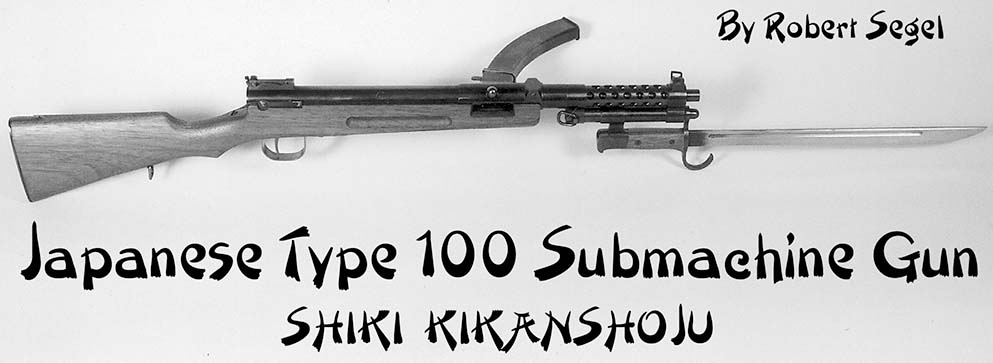Type 100 (1940). Note the large cylinder beneath the barrel jacket to mount the Type 30 (1897) bayonet and the adjustable rear sights.
by Robert Segel
HISTORY
The Japanese recognized the value of automatic weapons and their tactical use almost from their inception in the late 1890s. From 1900 through 1945, they constantly sought examples of machine guns from manufacturers worldwide for testing and evaluation, resulting in Japan successfully manufacturing heavy and light machine guns based upon the designs of Hotchkiss, Brno, Lewis, and even Browning. It is surprising then that their recognition, evaluation, development, manufacture and use of submachine guns had such a low priority until the mid 1930s.

From the 1920s through 1930s Japan imported two types of submachine guns for limited special naval marine service units use. They were primarily the Bergmann SIG M1920, imported from Switzerland (a licensed copy of the MP18/I), and secondarily the MP34/I imported from Germany. Both of these guns were chambered for the 7.63x25mm Mauser cartridge. The Bergmann guns (as they were collectively known) employed a removable barrel jacket collar of Japanese manufacture – added after importation – that acted as a bayonet attachment point. These heavy, wood-stocked, yet well made and reliable submachine guns proved useful in the Sino-Japanese War. In particular, their effective use during the attack on Shanghai caught the attention of Japanese commanders. This success resulted in the Imperial Japanese Army finally requesting development of its own submachine gun in the late 1930s.

DEVELOPMENT
In their initial development, there were two basic models, roughly continuing the blowback operating principles of the Bergmann. The first was simply referred to as the Model I. This was in 8mm Nambu, with a 50-round box magazine. The second was referred to as Model II and was built around a new 6.5mm cartridge and utilized a 30-round box magazine. Tests were conducted in 1936 and 1937 on the Model I. It was found to be generally satisfactory but modifications were recommended. Tests in June of 1937 on the Model II were canceled due to severe functioning problems using the new 6.5mm cartridge. As a result of the initial tests on the Model I, in April of 1937 an improved Model I was provided to the Cavalry School for testing. Once again, recommendations came back requesting changes and modifications in construction, operation and reliability. As a result of this test and other ordnance priorities, further development was shelved. It wasn’t until April, 1939 that the Nambu factory then produced a Model III submachine gun still based upon the original design of the Model I. Tests were conducted on the Model III and further modifications were recommended resulting in the Model III-B. A few minor changes were requested resulting in the Model III-C which was finally accepted and adopted in 1940 for standard service as the Type 100 (1940) submachine gun.
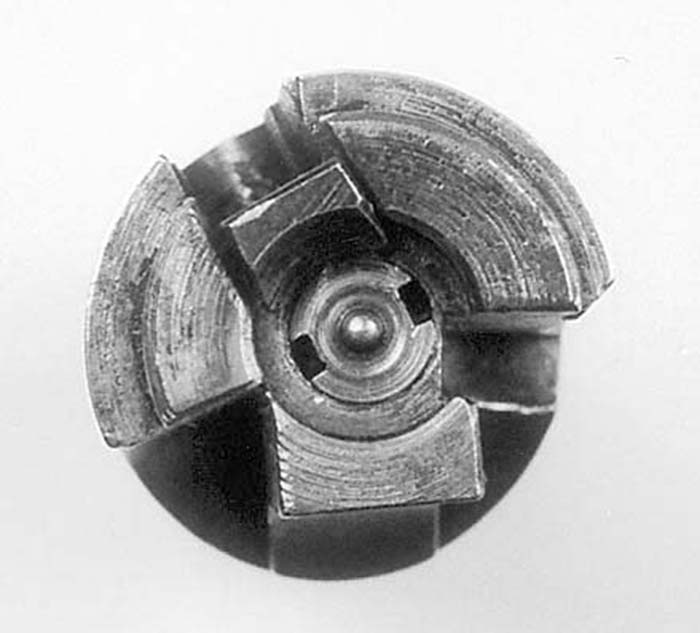
DESCRIPTION: TYPE 100 (1940)
The Type 100 submachine gun was ultimately produced in three variants. The first two were the Type 100 (1940) with slight variations for infantry and paratroop use and the third was the Type 100 (1944). The Type 100 (1940) was well made, but generally unremarkable although they did have several unique design features. Both of the 1940 versions of the Type 100 were identical except the paratrooper model had a hinged folding stock immediately behind the receiver that allowed the wooden stock to be folded 180 degrees forward along the right side of the gun. This provided a more compact envelope during paratroop drops but also was a source of weakness in the overall strength of the weapon. Both guns were chambered for the bottle-necked and underpowered 8mm Nambu pistol cartridge. The barrel was chrome lined to help retard wear and corrosion. There was a cylinder below the barrel jacket that served as an attachment point for the Model 30 (1897) bayonet. The magazine was a 30-round staggered-column stamped sheet metal box-type, curved to accommodate the bottlenecked 8mm Nambu round. When inserted into the magazine-well, located on the left side of the weapon, the curve faced forward. This forward-curving magazine proved to be a great liability, particularly in jungle environments, where it caught on branches and vines, often causing accidental discharge that resulted in friendly fire casualties. The rate of fire was a manageable 450 rpm and was full automatic only. A light metal bipod was available, but was not widely deployed. The firing pin was fixed, but instead of being milled into the breechface, it screwed in, making replacement easier and more cost-effective. Additionally, a moveable L-shaped bar was incorporated into the breechface to cover the firing pin during the feeding cycle to inhibit premature ignition. The bar then cammed upward and out of the way as the cartridge entered the chamber. Sights consisted of a blade-type front sight and tangent-type rear sight with an adjustable aperture from 100 to 1,500 meters. The one-piece, wood-stocked infantry version of the Type 100 (1940) was produced at the Kokura Arsenal and the folding two-piece wood-stocked paratroop version was produced at Nagoya. Though approved for use in 1940, these two versions of the Type 100 (1940) didn’t start coming off the production line until late in 1942. It is estimated that the Kokura Arsenal only produced approximately 7,000 of the infantry version and Nagoya only produced approximately 3,000 of the paratroop version. Issued to special marine landing forces and paratroopers, the Type 100 (1940) saw combat service in Palembang, Sumatra; Leyte, Philippines and Okinawa.
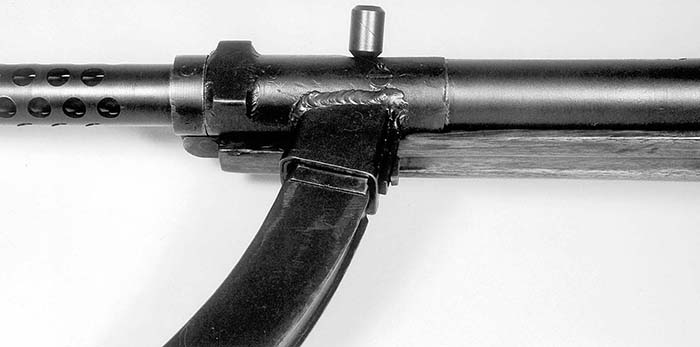
DESCRIPTION: TYPE 100 (1944)
By 1944, Japanese commanders in all areas of operations were demanding submachine guns and in mid 1944 the Atsuta Arsenal in Nagoya started producing the third and final variant of the Type 100. It was recognized that further modifications and simpler production methods were needed to attempt to mass produce the Type 100 to meet the increased demand. The Type 100 (1944) version used the same action and is constructed in a similar manner as the Type 100 (1940), but numerous manufacturing shortcuts were employed to simplify production. The operating spring was strengthened and elongated, resulting in an increased rate of fire of 800 rpm, almost doubling that of the earlier 1940 version. As the 8mm Nambu cartridge was acknowledged to be of low power, it was thought that increasing the cyclic rate would, in turn, increase the hit probability with an accompanying synergistic effect. The bayonet cylinder was removed and a simple single bayonet lug was attached to the barrel jacket to accommodate a shorter style bayonet. A compensator was permanently affixed at the end of the barrel jacket extension. The compensator had two holes, the one on the right being over twice as large as the one on the top left. This was designed to compensate for the gun’s tendency to move up and to the right as a consequence of the increased rate of fire. The rear sight was simplified to a single fixed aperture realistically set for 100 meters. A wooden butt plate was utilized and simply nailed on. The replaceable firing pin that screws on to the face of the bolt was retained but the L-shaped masking bar was eliminated. Additionally, spot welding was used to a great extent, in emulation of the British Sten Mk II and the US M3 submachine guns. This method of construction can be readily seen on the front sight, bayonet lug, magazine housing, barrel lock, operating spring guide and trigger guard. Markings were simplified to “100 SHIKI” (read right to left “Type 100”) and located at the top of the rear of the receiver tube, with the serial number and Nagoya arsenal stamp on the left rear end of the receiver tube. It is estimated that with only approximately one full year of production from mid 1944 to mid 1945, only 7,000 to 8,000 of the improved type 100 (1944) were produced, as Japan was suffering from severe materiel shortages and the factories were under constant B-29 bombing attacks. Sources indicate that the Type 100 (1944) was never distributed to active combat troops in the final year of the war but held in reserve for the expected Battle of Japan. There are, however, examples of the Type 100 (1944) in the United States, that were registered in the 1968 Amnesty by veterans of the island fighting, who mentioned these as captured in combat.
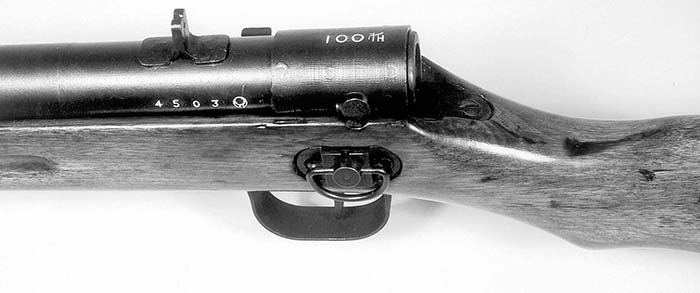
CONCLUSION
In all, less than 30,000 Type 100 submachine guns were built of all variants and was the only submachine gun actually manufactured in Japan. This is a relatively small number compared to the millions of submachine guns produced by the United States (M1928 and M3), England (Sten), Russia (PPSh-41) and Germany (MP40) in a war during which the pistol-caliber submachine gun reached its zenith. Why Japan was so slow to recognize the value of such a weapon remains a mystery. Had they adequately armed themselves with weapons of this type, the result of certain closely attested battles with the Allies could well have turned out differently. The Type 100 is relatively rare in the US collectors market, although a small number were brought home by G.I.s as war trophies. It is interesting to note that while G.I.s were allowed to bring back a submachine gun war trophy they were generally not allowed to bring back magazines. Thus, an original Type 100 submachine gun magazine is far rarer than the gun itself.
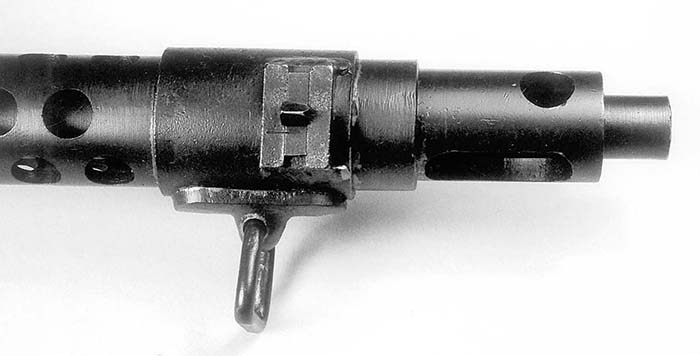
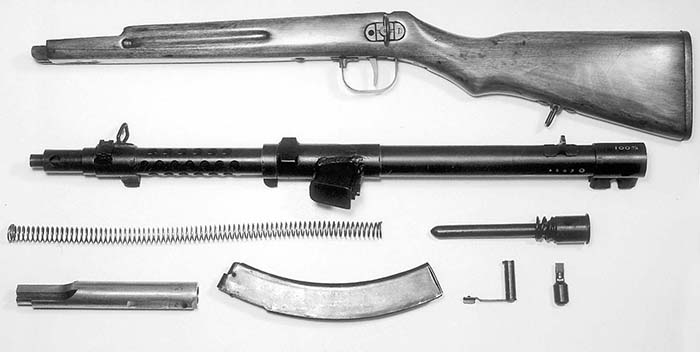
| This article first appeared in Small Arms Review V7N8 (May 2004) |



